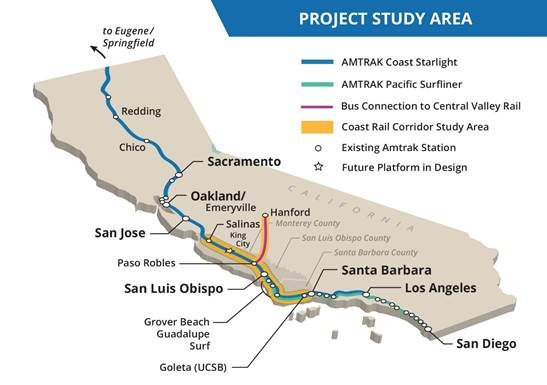- 104 Posts
- 803 Comments
It doesn’t work for backpacks that might have the company name embroidered on, but for cheaper print-on-demand items like hats and water bottles, acetone will cause the logo to dissolve or shift.
That says, I have personally removed embroidered logos from clothes before, when the product itself is excellent but aesthetically ruined by a logo. It’s very finnicky work with a seam ripper, and has gained me a lot of nice thrift store finds.


I’m going to comment in two parts, starting with human behavioral and then later addressing physiology.
It feels like I don’t have a real routine
I cannot underscore how important it is to develop a routine – any routine – since that’s the trick towards a long-term approach to fitness. Humans are kinda weird in that regard, in that they have to be correctly conditioned to do something week after week. Humans don’t approximate machines at all in this regard, and there’s even less reinforcement when the activity in question does not have a logical structure.
To that end, it would behoove you to formulate a more rigorous routine, one which assigns certain exercises to specific days, ideally occuring at around the same time each day. If after a few weeks (3-4 weeks) you find that some days are too heavily-loaded while others are a cake walk, that’s a cue to increase the sets, reps, or weights for the easy days, and ease up on the same for harder days. Mentally conditioning yourself to the strains of exercise is part and parcel to physically conditioning yourself for the same.
Correct me if I am wrong but I think it could be a better idea to just listen to your body and not to a routine?
It is correct to listen to your body, but the adjustment shouldn’t be to just randomly throw in a rest day. But rather, fine-tune your routine so that your exercise regime matches what your body is presently capable of. As your body improves, adjust accordingly.
My recommendation for picking which days will be what is to form it around your existing work or life schedules. If, for example, leg day always leaves you totally exhausted, then maybe put that for Friday so you’re recovering (physically and mentally) on a slow work day or over the weekend. What order you choose will depend on how you can optimize your fitness plan into your life plan, but whatever you end up with, stick with it for a few weeks and take notes – ie hard copy – about what is or isn’t working.
Which brings us to the physiological side of things.
I came to the conclusion that I absolutely might not need a rest day if I have the energy and motivation to go to the gym.
The present understanding of human fitness is that rest days serve multiple valuable purposes, whether the objective is building muscle, functional strength, endurance, or weight loss. There’s also the matter that – disregarding performance enhancing interventions and their major side effects – the human body cannot totally transform itself in short spans of time, there isn’t much benefit in trying to rush a fitness program. If anything, it tends increases the risk of injury or developing poor form and habits.
With the exception of professional bodybuilders and athletes, whose occupation wholly surrounds their fitness, everyone else can and should take their time to achieve their fitness objectives. To be clear, I’m not suggesting one-month rests between exercises, but rather, the schedule or program adopted should not be unduly swayed by time pressures, instead guided by what your body is saying and what it can do. Skip days can and will happen too, and a few won’t seriously disadvantage you in the long-term. Though a few weeks off could break the fitness habit, and you’ll have to reestablish it.
For the routine you’ve written out, I’m somewhat concerned as you’ve got back exercises on Tuesdays, Wednesdays, and Fridays. That doesn’t leave a lot of days in between to recover. Biceps twice a week seems fine though, since the thinking is that 24-48 hour rest for biceps is acceptable. But seeing as biceps and triceps are part of the same logical body part, while remaining separate muscle groups, there wouldn’t be an issue with having a general “arm day” that focuses on those groups, although some overlap into the other days would be acceptable.
In concrete terms, I would suggest that you orient your fitness routines into a schedule, whether that’s still 6 days a week, or 5 days, or whatever. As general advice, make sure your water and diet intake is alright, and you’re sleeping a decent amount per day.
Well, since I’ve already linked to two of my not-quite-a-lathe projects, I might as well link to the one which started it all: https://sh.itjust.works/post/16087080
This one does have a motor, but not a conventional one at all. And this only worked because the thing I’m turning would need a center hole drilled through anyway.


From a different thread, I’ve remembered to come back with a photo of what the makeshift lathe looked like. It’s quite janky, but it worked.

Thank you for the kind words! All of the tools I used were things that were laying around. I’m marginally better at woodworking than metalworking, so that’s why the jig holding the bar was all wood.
I did think about attaching the motor from a disused drill press to spin the bar, but that seemed like it would invite all manner of complexity.
Lathe is in my future, but I kinda want a CNC first. But a CNC lathe would be god-tier.
I am a big fan of makeshift lathes, for tasks that don’t necessitate a full metal workshop. Though I do hope to have a small lathe one day.

They should fix and expand a comprehensive on-road bike network before enforcing and nitpicking regulations
Absolutely agree 100%. IMO, it is a public policy failure that we’re not doing more to: 1) incentivize more people to use electric micro mobility that exists right now (compare with flying cars, hydrogen cars, self driving cars, so-called hyperloop, electric VTOL aircraft, etc), 2) discourage car dependency by taking it down a peg in terms of priority for space on the public roads, and 3) pursue land use changes that increase density so that micro mobility and public transit are the first-choice option for most people, not the last.
It is patently absurd to me that enforcement effort – which in most American cities is a zero-sum game – is being expended to go after ebikes and e-scooters for frivolous offenses like speeding (frivolous bc it’s still slower than all the much-larger cars going by) while motor vehicles offenses get a free pass (eg the informal rule that 5-10 MPH over the limit is acceptable). It’s very much screams “rules for thee but not for me” and it cannot be tolerated while this country fights for whatever remains of the rule of law.
As for genuine issues created by micro mobility, we’re fortunately seeing some progress in that regard, where progress means bringing more currently-unlawful e-machines into the regulatory structure. As discussed earlier in this community, California has a bill which would create eMotos as a category, for things which otherwise would be burdened by onerous or impossible motorcycle registration.
Enlarging the micro mobility pie should be the objective. Anything that tries to discourage or shrink the pie should be shunned.
To that end, everyone in this community needs to be a thorn in their local government, and apply pressure and reminders where it counts. At least where I live, this effort is showing results, as my town has just published a bicycle/pedestrian improvement plan (timeline of 10+ years) which although not necessarily all funded, it outlines a proper grid of curb-separated on-steet bike corridors on arterial roads. None of this “circuitous back roads” nonsense, and because it follows the same road alignment, it would be most appropriate for Class 3 ebike speeds.
Having an adopted plan is valuable ammo to fight for building those projects, even in piecemeal fashion, when the road inevitably is due for repaving and the town needs to apply for state/federal funding. Here in California, towns can win additional grant funding if they actually build the bike and pedestrian projects they’ve already planned out. And money is persuasive.
Be the change you want to see.

Note: these are recommendations to EU regulators, by a German industry group. The USA definitions for ebikes – first promulgated in federal product safety law and then adopted mostly as-is by the several states – would not automatically change in response.


The datasheet for the IRF1404Z does indeed show that the TO-220 package has a limit of 120 A continuous at 25 C. It should be noted that the junction temperature is rated for up to 175 C, which might provide a lot of headroom for, but we’ll see.
The minimum dimensions for the drain and source leads are 0.36 mm by 1.14 mm. This gives us some 0.41 mm^2 cross sectional area. Assuming the leads are made of aluminum – I’m on mobile and can’t quickly check the composition for the generic TO-220 package – which has a resistance of about 60 Ohm per km, and with the lead being a maximum length of 14.73 mm, the resistance of either lead will be some 0.88 mOhm.
At 120 Amps, the resistance heating would be about 12.6 Watts. That’s quite hot for a short lead, and there’s two of them. But the kicker is that these aluminum leads are also thermally conductive, either into the package towards the junction, or away and into a generous PCB layer or to suitably-sized copper wires.
Either way, that will sink a fair amount of heat, although the thermal resistance for the package legs is not given in this datasheet. It may be defined for generic TO-220 packages though.
As a practical matter, to operate a MOSFET ar 120 A would likely require active cooling, and their test jig plus all reasonable implementations will have a fan. Moderate airflow over the leads will also wick temperature away, which might bring the leads down to a “hot but not fire-inducing” levels. But an EE or thermal engineer would need to sit down to do that simulation.


Is this question about drivers that turn off their indicators while still mid-turn? Or about drivers that turn or change lanes in very little time at all?
IMO, the correct time to use indicators is precisely when in preparation for a turning or lane-change manoeuvre, during such manoeuvre, and that’s it. Once the manoeuvre is done, the indicators should be extinguished to avoid ambiguity, unless a follow-up manoeuvre is planned.
I see no logical reason to enforce a prescribed minimum for indicator time, and it’s why I see minimum-three-blink on some modern cars as an anti-feature. After all, there’s no minimum (nor maximum) time to prepare and make a turning manoeuvre.
To use a USA example, the driving style of Los Angeles inter-city freeways is – for better or worse – going to necessitate fairly quick lane changes, because of the tighter spacing between cars. In hard figures, a lane change might be prepped and done in 3 seconds. Some might say that all these drivers are violating good driving behaviors for following each other so closely, but it’s sadly a practical necessity when no amount of “just one more lane” can solve the systemic issues with regional road transportation there; it’s why LA is doubling down on public transit building.
Compare this with changing lanes on a rural Interstate freeway to pass a semi-truck, where a lane change can be more sedate because there might not be any other traffic in sight except for the two vehicles involved. Smooth driving on a road-trip might have this manoeuvre prepped and completed over 10-15 seconds, as the car might also be slowly accelerating while also changing lanes. Sometimes on these two-lanes-in-each-direction roads, the driver might even continue using the left indicator, but it now unambiguously indicates that they intend to fully overtake the semi-truck, and will switch on the right indicator once fully ahead and they intend to return to the right-hand lane.
In both circumstances, the indicators should remain blinking while mid-manoeuvre. Anything short of that is “too quick” in my book.
But if your question is how far in advance should drivers begin indicating before the manoeuvre, that’s a joint matter of regional convention and of law. And the former usually is the strongest influence.
TL;DR: indicators indicate intent, but some people have quick intent.

Two necessary questions about you: 1) do you or your spouse have any federally-backed student loans, even if issued through a private lender? And 2) do you and your spouse currently file taxes as married filing jointly (MFJ)? From your description, it looks like you only mentioned your mortgage debt but not the type(s) of student loan debts that you or your spouse may have.
I ask these questions because from reading only that single article, the proposed change made by the Under Secretary of Education appears to only impact: a) federally-backed student loans that b) are being repaid under three of the four income-based repayment plans (specifically, PAYE, IBR, and ICR), and c) when the division of student loans between the couple would create lower repayments under the existing rules.
That last point needs some clarification: if both spouses carried equal-sized student loan debts and both spouses have the same individual income, then it’s possible that there is no difference in monthly repayments whether the spouses combined their income and debts, or separated their income and debts, which is a choice that the existing rules allowed. Thus, if the existing rules are scraped and this choice goes away, this hypothetical couple is no worse off. But to be clear, I’m not an expert in how different income-based repayment plans scale with joint income, so such a hypothetical couple might not even exist.
What’s important is to figure out if this even affects your situation. This is, after all, personal finance, and I save my complains about arbitrary and capricious regulatory whack-a-mole for another venue.
If you both don’t have student loans, this is not an issue for you. If you both have private student loans, this is no worse off for you. If you have federally backed student loans but have no issue paying them down at the original rate, this is not an issue for you. If you have plan to, already have, or have been approved for a federal student loan income-based repayment plan, then this change might apply to you.
But if you applied (or will apply) under SAVE, this doesn’t seem to affect you. Whereas if you applied/will apply under the other three, and you will absolutely not change your filing status from MFJ, then this will not affect you.
Insofar as I can glean from this article, the regulatory change removes the option to file as married filing separately (MFS) in order to potentially reduce the monthly repayment amount. If you were open to possibly switching to MFS, then you’d have to assess the likely tax increase caused by changing from MFJ to MFS, and then assess how much the monthly repayment would reduce by.

I’m not aware of something that’s ready-made for exactly this purpose, but my first port of call might be to look at tie-down straps or luggage straps. The former are available at all manner of home improvement or auto parts stores, but have the drawback of being somewhat narrow (ie it’ll press into your shoulder more) and have a metal buckle that can scratch up your bike if it flails around.
The latter might also work, provided that they actually have a weight rating of some description, and often a wide webbing with a wide plastic buckle, but you’ll have to figure out how to wrap this onto your bike, probably as a loop that circles the head tube and circles the seat tube.
In either configuration, a 6-8 ft (2-2.4 m) length should suffice, I would think.

Essentially, yes. The strap would ideally be the correct length so that when you’re climbing stairs, the bike is hovering just above the stairs, with your shoulder roughly above the bike’s center of gravity so it won’t pitch up or down. A wider strap like on luggage bags would be optimal, to distribute the weight on your shoulder. Meanwhile, you’d use your arms to stabilize the bike left/right so it doesn’t hit the stairwell walls. You’d also rotate the cranks so they’re out of your way whilst climbing the stairs.
Best scenario is that the strap can just be left attached to the bike, so that you’re already ready to lift it up some stairs or onto buses or over any obstructions in the road.

A rope or strap from the head tube to the seat tube, as recommended to me from this very community for my 95 lbs (43 kg) ebike:
Not so much squatting the bike from below, a strap from the seat tube to the headstock would give you good height adjustment to get it high enough to make getting it up the stairs easier but not so high your lifting it needlessly high

What you’ve built is a smiles-per-hour machine. :)
In all seriousness, over 750 W but less than 4 kW, and over 20 MPH but less than 30 MPH, that might be registerable as a moped in California. You can even eschew the pedals, as electric mopeds don’t need them here. There’s a process for getting a randomly-assigned VIN and one-time plates, and the rider needs an M1 or M2 license.
But such a machine is, on its face, not unlawful in California.

I can only say that I’ve seen Surron bikes with California motorcycle plates, so it must be possible. Then again, this is a state with a tremendous number of electric and other non-gasoline, non-diesel vehicles, so my guess is that the DMV is very used to the idea that something might not require a liquid fuel. It might be a easy as a form that certifies under penalty of perjury about the fuel type.
My understanding of federal law is that it doesn’t do much to affect whether a state can issue registration for a particular machine/vehicle (they usually can), but it does impact: 1) the ability to even import such a thing into the USA, and 2) whether other states will honor reciprocal operation when out-of-state.

Did this article actually provide some answers? The tariff situation is complex, uncertain, and thus very difficult to predict with any degree of accuracy, nor does it have any comparable historical analogue.
The closest comparison of sanctions to tariffs is that they distort or outright prohibit certain imports, but that’s not close enough to draw many conclusions. The article states that Russian bike stores looked to stocking Chinese-made bikes, which weren’t complicated for export to Russia. Whereas with current events in the USA, tariffs seem to have applied to every country’s imports, of at least 10%, excluding certain exempt categories that are about as fickle as the wind.
That leaves the USA with no economic allies to lean on, and seeing as bicycles are made from base materials often imported, it’s unlikely that USA-made bikes or parts would avoid tariffs either.
But maybe there’s some silver lining: a 10% tariff on acoustic bicycles (<$1000) would be some $100, the same on electric bikes (<$4000) would be $400, but a 10% tariff on a new automobile (USA median price $50k) would be $5000. Under a flat tariff rate, automobiles shoot up by an absurd amount, and that might make micro mobility more popular, as a way to save a lot in both purchase price and annual operating costs.
Even used cars are not immune from tariffs, as the used automobile fleet still needs replacement parts, which are often imported. So suddenly, it may make sense for households to sell an older car and get a new utility ebike, even with the tariffs in place.
Not to say that the tariffs are rooted in any sort of logic or public policy.

I follow a lot of bicycle legislation in California, and this bill is no different. In short, this bill – if it passes as-is – would create the new category of “eMotos” for things that today are otherwise grouped together with the broad class that is motorcycles (CVC 400). This categorization would exist alongside other categories such as “mopeds/motorized bicycle” (CVC 406), “bicycle” (CVC 231), and “electric bicycle” (CVC 312.5). Yeah, it’s kinda confusing, all these similar names.
Under California law, an electric bicycle is a subset of bicycle, and are “devices” rather than “vehicles”. This makes them distinct from trailers and specifically “motor vehicles”, which includes automobiles and motorcycles. Strangely enough, a moped (aka motorized bicycle; which is different than an ebike) is also a “device”, making it not subject to motor vehicle insurance requirements. I’ve written about mopeds before.
With that in mind, a new category that carves out “electric two-wheeled device built on a bicycle infrastructure that does not have pedals” serves to lessen the registration burden. Without this bill, a Surron-like eMoto is either a motorcycle with insurance and full registration requirements, or an off-highway dirt bike subject to annual OHV registration tags. The new eMoto category would likely be akin to moped plates, which are a one-time fee to obtain but helps in identifying and recovering if stolen. Note: fully-registered automobiles and motorcycles, plus mopeds with plates, do not need separate OHV tags to use OHV facilities.
The status quo is that most eMotos today are probably being ridden on-street without registration, or off-highway at places like state OHV parks but they’re being cited for not having OHV tags. This bill does nothing for the first issue, but resolves the second issue. People can, should, and do buy eMotos for them or their children to ride off-highway, and the law should support recreation like that. We have numerous OHV parks for exactly this purpose.
A different comment suggested that this bill attempts to address on-street use of illegal ebikes. That is wrong, and the bill’s text is quite clear about that. Machines that are outside the definition of ebikes are automatically motorcycles, and thus are illegal on-street or off-highway when ridden without registration. This bill addresses the latter.

Engineering-wise, large diameter bearings with low friction are entirely possible. This just happens to be one of the worst implementations of a large bearing, in an application where it really, really matters to be low resistance.
My point is that low-friction bearings still wouldn’t have saved this design from impracticality, so focusing on just the bearing issue would be giving a free-pass to the rest of the design pitfalls of this monstrosity.





















Yep, sometimes acetone will do that. But other times, another solvent like gasoline might do the trick. Or maybe a heat gun.
I see it as an engineering challenge, how to best remove intrusive logos from stuff. IMO, all this is part-and-parcel to the second part of: reduce, reuse, recycle. Also, sometimes certain logos can be clipped in very creative ways haha